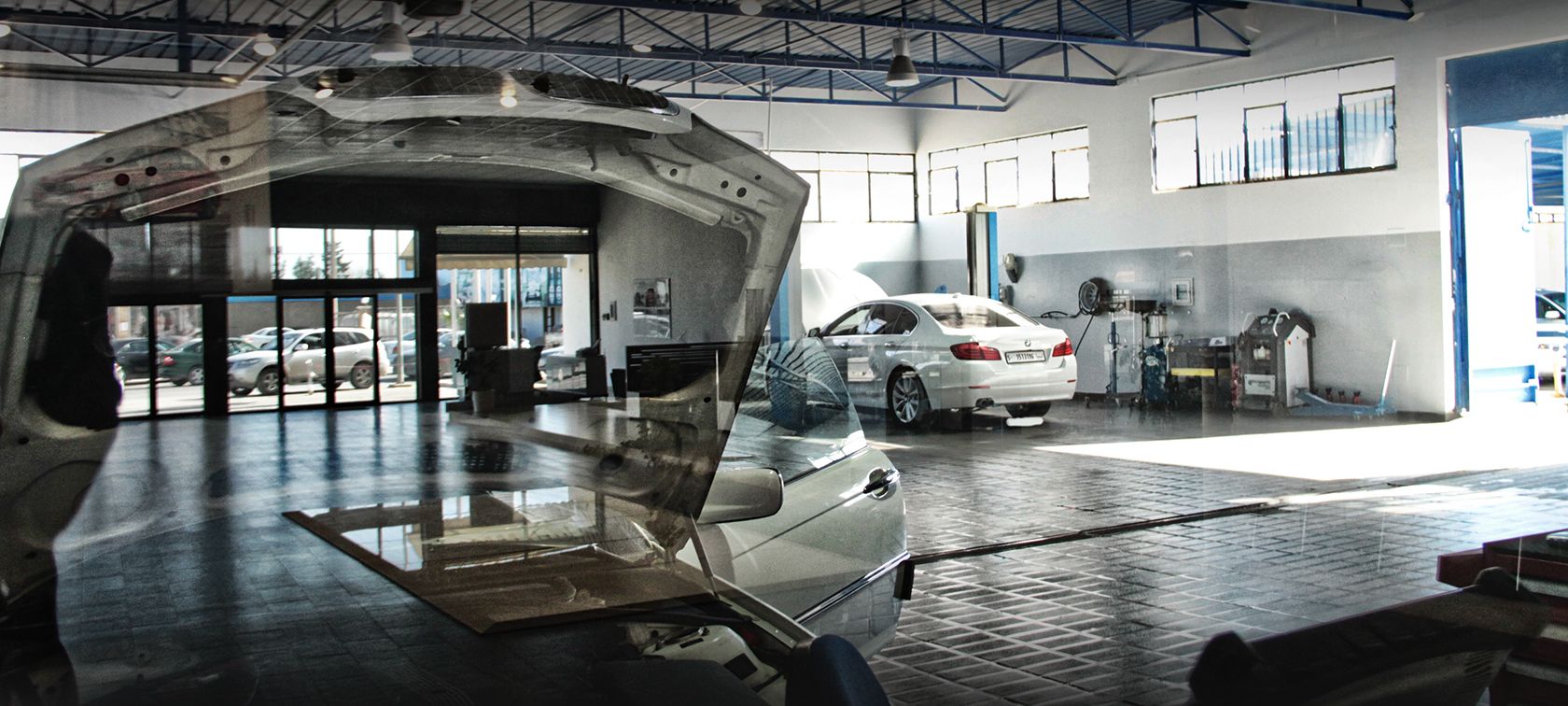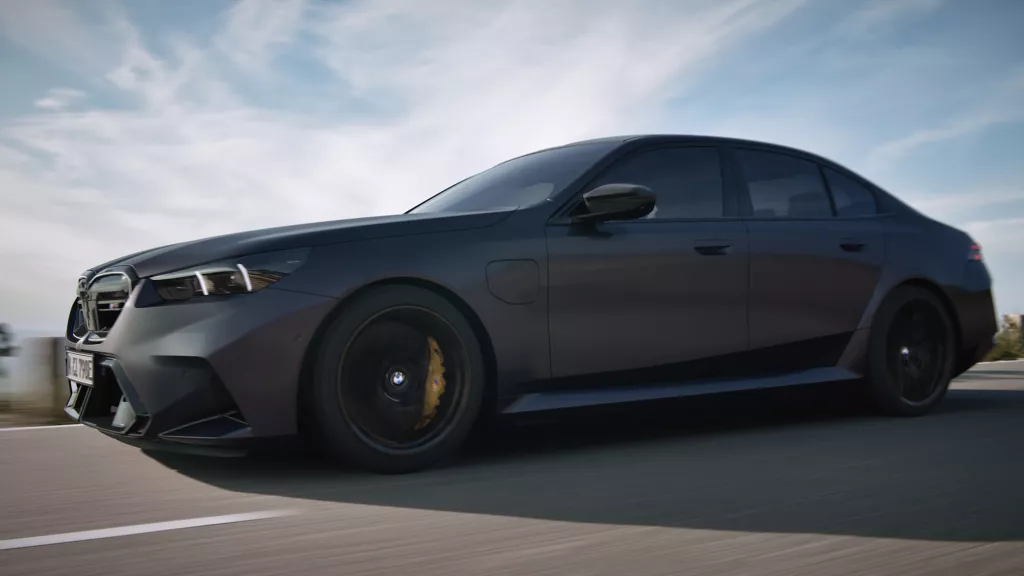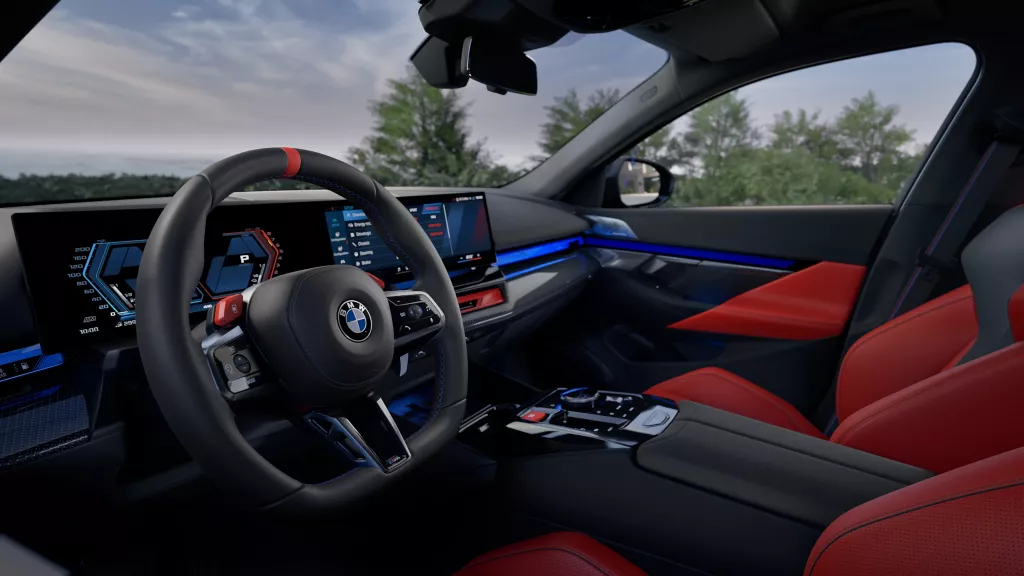BMW M5 Sedan[1][2]: Fuel consumption, combined WLTP in l/100 km: 1.7–1.6; CO2 emissions, combined WLTP in g/km: 39–37; Energy consumption, combined WLTP in kWh/100 km: 25.5–25; Electric range, WLTP in km: 67–69
[1] Range depends on various factors, in particular: individual driving style, route characteristics, outside temperature, heating/air conditioning, pre-conditioning.
[2] For plug-in hybrid: Weighted, combined (EC AC Charge Weighted)
Driving pleasure. To the core.
Compromises? You will look in vain here. The BMW M5 Sedan with M xDrive will cast its spell over you when it starts, if not before. Discover this high-performance sports car, its equipment options and technical data, plus numerous leasing and financing options.
Variants and technical data.
-
Models
-
Plug-in hybrid
-
| BMW M5 Sedan | |
|---|---|
|
Power[3][4] |
535 kW (727 hp) |
|
0-100 km/h |
3.5 s |
|
Vmax[1] |
250 km/h |
|
Electr. Range[1] |
67–69 km |
BMW M5 Sedan[3][4]: Fuel consumption, combined WLTP in l/100 km: 1.7–1.6; CO2 emissions, combined WLTP in g/km: 39–37; Energy consumption, combined WLTP in kWh/100 km: 25.5–25; Electric range, WLTP in km: 67–69
[1] Range depends on various factors, in particular: individual driving style, route characteristics, outside temperature, heating/air conditioning, pre-conditioning.
[2] For plug-in hybrid: Weighted, combined (EC AC Charge Weighted)
[3] Composed of combustion engine drive 430 kW / 750 Nm and electric drive up to 145 kW / 280 Nm. Electric drive depending on battery charging level.
BMW M5 Sedan[1][2]: Fuel consumption, combined WLTP in l/100 km: 1.7–1.6; CO2 emissions, combined WLTP in g/km: 39–37; Energy consumption, combined WLTP in kWh/100 km: 25.5–25; Electric range, WLTP in km: 67–69
[1] Range depends on various factors, in particular: individual driving style, route characteristics, outside temperature, heating/air conditioning, pre-conditioning.
[2] For plug-in hybrid: Weighted, combined (EC AC Charge Weighted)
Your BMW M5 Sedan.
Performance.
For unadulterated joy. M Hybrid.
Its M Hybrid powertrain with high-performance M TwinPower Turbo V8-cylinder petrol engine and electric drive thrusts you into the back of your seat with an impressive system power of 535 kW (727 hp) [3][4]. Its torque of up to 1,000 Nm [3][4] is dynamically distributed by the M xDrive to all four wheels.
Exterior design.
Unmistakable even in the dark.
Highlight features include the completely reinterpreted design of the BMW kidney Iconic Glow with contour line lighting, the new double light signature of the front headlights, and the dynamic M-specific Welcome Light Carpet.
A material that wows you visually as well.
The M Carbon exterior package lends your BMW M an even sportier look. The roof, exterior mirror caps and rear spoiler are made of lightweight and robust carbon fibre.
Interior design.
A perfect fit.
From the individual backrest width to seat heating. Both M multifunction seats can be adjusted in many ways for optimum support and comfort.
Digital highlights.
Electric driving pleasure.
Charge. However and wherever you want.
Intelligently by your Side.

Your BMW M5 Sedan.
Enrich your individual lease or loan product with attractive services and insurance in one package.
All in. Simply smart. BMW Financial Services
Proactive Care in the BMW M5 Sedan.
Frequently asked questions on the BMW M5 Sedan.
You may also like.
Fuel consumption and CO2 emissions.
BMW M5 Sedan[1][2]: Fuel consumption, combined WLTP in l/100 km: 1.7–1.6; CO2 emissions, combined WLTP in g/km: 39–37; Energy consumption, combined WLTP in kWh/100 km: 25.5–25; Electric range, WLTP in km: 67–69
[1] Range depends on various factors, in particular: individual driving style, route characteristics, outside temperature, heating/air conditioning, pre-conditioning.
[2] For plug-in hybrid: Weighted, combined (EC AC Charge Weighted)
[3] Composed of combustion engine drive 430 kW / 750 Nm and electric drive up to 145 kW / 280 Nm. Electric drive depending on battery charging level.
[4] For plug-in hybrid: Electric drive depending on battery charging level.
[5] Material-specific properties can cause increased function-related noises when braking, e.g. after longer periods of light braking or just before coming to a stop in wet conditions. The influence of road salt or wetness, e.g. after using car washes, overnight condensation, driving in the rain, etc., can cause the braking effect to be similar to that of a conventional brake system. This reduced braking effect can be compensated for with greater pedal pressure.
[6] For plug-in hybrid: At temperatures below freezing, the fully electric drive system is only available after a few kilometres of driving, once the battery has heated to operational temperature.
Performance data of petrol engines apply to vehicles using RON 98 fuel. Fuel consumption data apply to vehicles using reference fuels in accordance with EU Regulation 715/2007. Unleaded RON 91 and higher with a maximum ethanol content of 10% (E10) may also be used. BMW recommends RON 95 fuel. For high-performance automobiles, BMW recommends RON 98 fuel.
Official data for fuel consumption, CO2 emissions, power consumption and electric range was determined in accordance with the prescribed measuring procedure and corresponds to European Regulation (EC) 715/2007 in the applicable version. For ranges, data determined as per WLTP takes into account any optional equipment (available on the German market in this case). For vehicles that have been newly type approved since 1 January 2021, only the official data according to WLTP exists. In addition, NEDC values are deleted from the certificates of conformity as of 1 January 2023 by EC regulation 2022/195. For more information about NEDC and WLTP measuring procedures visit www.bmw.com/wltp
Further information about fuel consumption and official model-specific CO2 emissions of new passenger cars can be found in the "Guideline for fuel consumption, CO2 emissions and electric power consumption for new passenger cars", available free of charge at all points of sale, at the Deutsche Automobil Treuhand GmbH (DAT), Hellmuth-Hirth-Str. 1, 73760 Ostfildern-Scharnhausen, Germany, and under https://www.dat.de/co2/.
































